After a drought revealed the seawall of a Byzantine Empire harbor town near Istanbul, archeologists excavated what was a thriving ancient center. But how does it fit into the city's 1,600-year history?
Jennifer Pinkowski
Source - http://www.scientificamerican.com/article.cfm?id=ruins-of-forgotten-byzantine-port-yield-some-answers
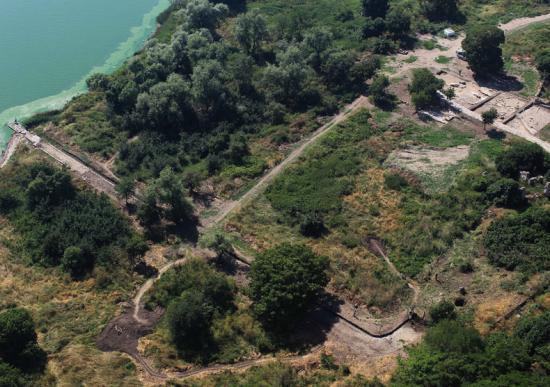
Aerial of the Little Harbor: This aerial shows about a third of the excavated site—a section archaeologists call the "little harbor" after the second-century B.C
Hidden for a millennium, it took a 21st-century drought to reveal the ruins of a long-lost port city. Five years after archaeologists discovered its four-kilometer-long seawall on a polluted lake 20 kilometers from Istanbul, they continue to unearth Bathonea, which is yielding a wealth of rare artifacts and architecture spanning a thousand years of the Byzantine era.
Excavations this year have essentially doubled Bathonea's known size, bolstering the idea that it was a well-connected, wealthy, fully outfitted harbor city that thrived from the fourth to 11th century, when a massive earthquake leveled much of it.
Bathonea is a rare and important find because little remains in Byzantium proper (now the modern city of Istanbul) of the first few centuries of the Byzantine, or Eastern Roman, Empire. The ancient urban center has been built over too many times in its 1,600-year history to leave much behind.
Located on a long-farmed peninsula on Lake Kucukcekmece, once an inlet on the Marmara Sea, Bathonea reappeared in 2007 after a drought lowered the lake's watertable, exposing portions of the seawall. It turned out to be almost half the length of the wall that once surrounded Constantinople (as Byzantium had been renamed for Constantine the Great).
The wall's substantial size suggested Bathonea was a significant safe harbor for ships on their way to Constantinople beginning in the fourth century, just as the city became the seat of power for the Eastern Roman Empire.
In previous years archaeologists, led by Kocaeli University's Sengül Aydingün, have unearthed some of the seawall, a multistory villa or palace, an enormous cistern, the round foundations of a Greek temple, and the toppled remains of a Byzantine church and cemetery. Nearby, stone roads crisscross each other and 1,500 years of history.
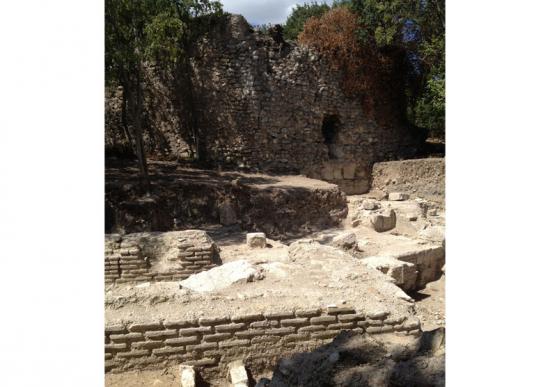
PALACE: The remains of a well-appointed villa continue to yield evidence of its residents' wealth.
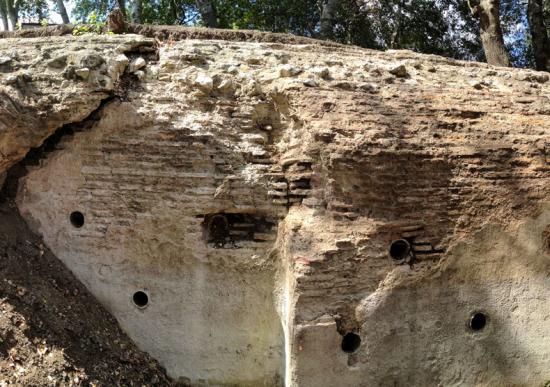
Cistern: As seen in this stitched-together image, the pipes poking through the cistern wall look almost modern and just as ready to pour fresh springwater as they were 1,650 years ago
This year they discovered a large multistory building and a series of smaller rooms adjacent to the villa that artifacts indicate was a monastery with workshops for making metal, jewelry and glass that began production in the fourth century. The jewelry molds they discovered may be the first archaeological evidence for jewelry production in Constantinople, a tradition known from historical sources.

Monastery and workshops: Adjacent to the palace archaeologists unearthed one large building and a series of smaller ones that appear to be parts of a complex dating back to the fourth century, which included the palace, a monastery and a series of workshops for making metal, glass and jewelry
Another key find is the exceptionally preserved, two-part network of underground water channels hundreds of meters long that kept Bathonea's cistern and buildings supplied with freshwater.
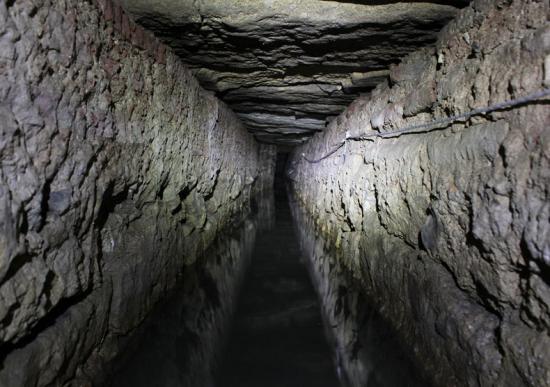
Water channels: Spelunkers explored hundreds of feet of a two-part water channel system that archaeologists discovered this year. The channels directed freshwater to the cistern and buildings throughout Bathonea
They also found a Hellenistic building hiding in plain sight among 19th-century structures and a road connecting it to a second-century B.C. harbor, providing more evidence of Bathonea's earliest days.
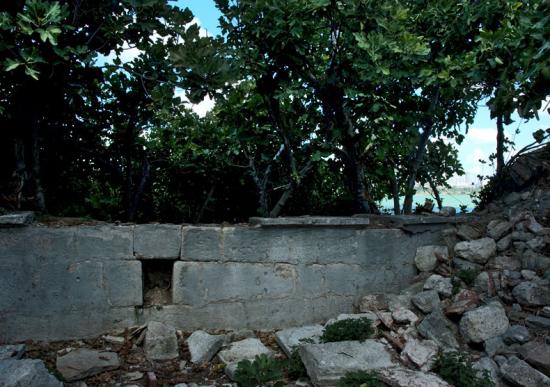
Hellenistic building: It doesn't look like much, but archaeologists were excited to find this plaster-coated building hiding in plain sight because it provides more evidence of Bathonea's beginnings.
A massive earthquake in the 11th century seems to have largely destroyed Bathonea. Archaeologists continue to find toppled walls (including one that killed the three men found beneath the rubble) from all the buildings. Yet judging from the pottery found, some residents eked out a life at Bathonea as late as the 12th century.
Many questions remain: What was Bathonea's connection to Constantinople? Who lived there? If it was a major harbor inhabited by the wealthy and powerful—the region was a well-known country retreat for Constantinople's elite for centuries—why doesn't it appear in known historical sources? (Its name is a placeholder, inspired by two references eight centuries apart.) And what was its relationship to Rhegion, an imperial compound located just across the lake on the Marmara Sea?
To try to answer these questions, Aydingün and her team will focus next year's dig on the seaward tip of the peninsula, where ground-penetrating radar has detected underground anomalies that may be structures. They also hope to restart underwater exploration. In 2008 they discovered an edifice that may have been a lighthouse. Local lore holds that it is a magical minaret that rises in warning whenever nearby villagers sin too much.